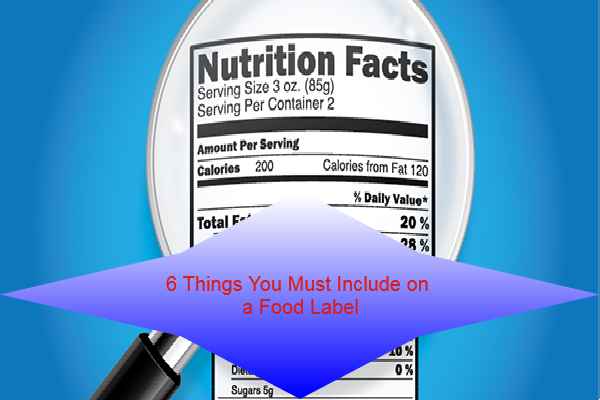6 Things You Must Include on a Food Label

The label is an essential component of any product packaging. It’s especially important in the food industry, where labels outline useful information to consumers. This includes guidelines on how to store, prepare and use the product, as well as details regarding additives and allergens that some people may want to avoid.
In doing so, labels go a long way in protecting public health and safety. They also make shopping easier by allowing you to quickly identify points of comparison when searching for the best version of a particular product. For manufacturers, labels also serve as an opportunity to highlight key selling points, such as the presence of healthy ingredients.
An effective label not only provides these details, but does so in accordance with the regulations. With this in mind, here are six things you must include on a food label.
Use-By/Best Before Date
All food products need to have a clear ‘use-by’ or ‘best before’ date printed on the packaging. This is best accomplished with the latest coding technology such as that provided by Diagraph. With the Diagraph suite of tools and software, you can create consistently sharp, high-resolution dates, barcodes and more.
Name
The next piece of information any label should have is the name of the product, which must be stated clearly and not be misleading. If there isn’t an official name prescribed by the law, a customary title should be used. In other words, it must be something familiar to consumers. Keep in mind that the names of foods which have been processed in some manner need to include the processing method. For example, dried fruit, salted peanuts or smoked ham.
Ingredients
Any food product with two or more ingredients must list its contents under a heading that includes the word “ingredients.” These must be listed by order of weight, with the first entry being the ingredient that was used in the highest quantity when making the food. Of course, fresh fruits and vegetables, as well as water, are the exceptions here.
Allergens
If your product contains one or more of the officially recognized allergens, it must be emphasized on the label where the ingredients are listed. You can highlight it with bold lettering, as well as a different background color, font or style.
QUID
The quantitative declaration of ingredients (QUID) area of the label illustrates what percentage of the food comprises certain ingredients. This is mandatory when the ingredient is:
- In the name of the product
- Emphasized on the packaging or label
- Essential to characterizing or distinguishing the food from other products
- Typically associated with the ingredient by consumers
Net Quantity
To comply with the Food Information Regulations, the net quantity of your product must be displayed on the label. If the food is packaged in liquid, the net weight must be when the product is drained. Note that this detail doesn’t need to be shown when the product is subject to significant losses in mass or volume, or is normally sold by number.
Another consideration is storage conditions, along with the name and address of the manufacturer. You should also detail preparation instructions and specify the country from which your food originated.
